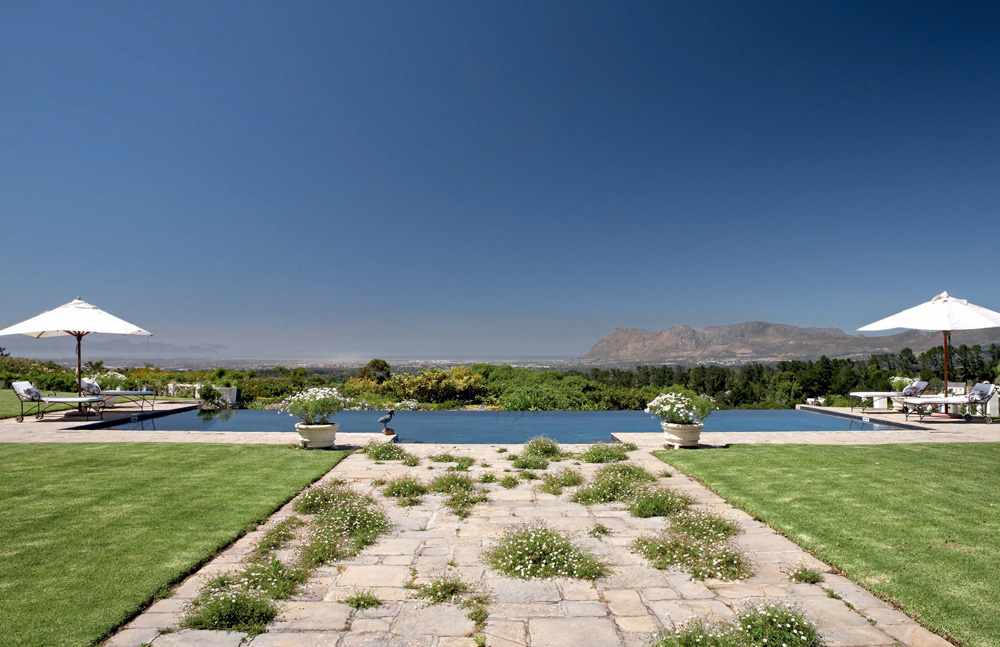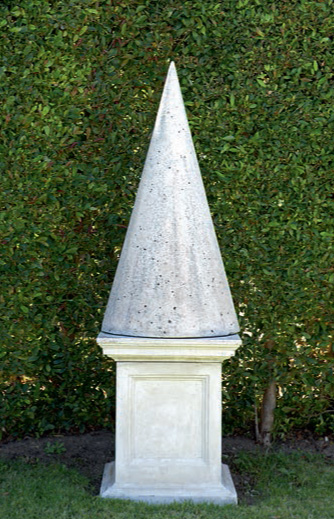Sea views and citrus trees
Gifted garden designer June Commerell was appointed by this international couple to landscape and redesign their newly acquired property in Constantia in the Cape. With June’s natural flair for envisaging an end result, she spent the following two years developing what is now a well-proportioned and interesting garden punctuated with fountains, arches, a lavender hill and a gravel orchard.
June methodically designed each section of the garden from her imagination. The garden needed form, symmetry and interest, particularly below the pool area, which had previously been ignored.
She first proposed that the small, rather insignificant pool at the side of the house be replaced with a larger one that would serve as a focal point, as well as being more in keeping with the proportions of the house. Because the garden is on two levels and challenged by a sheer drop to below house level, June also proposed the creation of another point of interest, a gravel orchard.
With its differing soils, varying vegetation and exposure to the notorious vagaries of the Cape’s weather, this garden certainly was a creative test, but one that June passed with distinction.
‘I have been gifted with the ability to visualise a completed garden, which is lucky, as I cannot draw!’
JUNE COMMERELL




